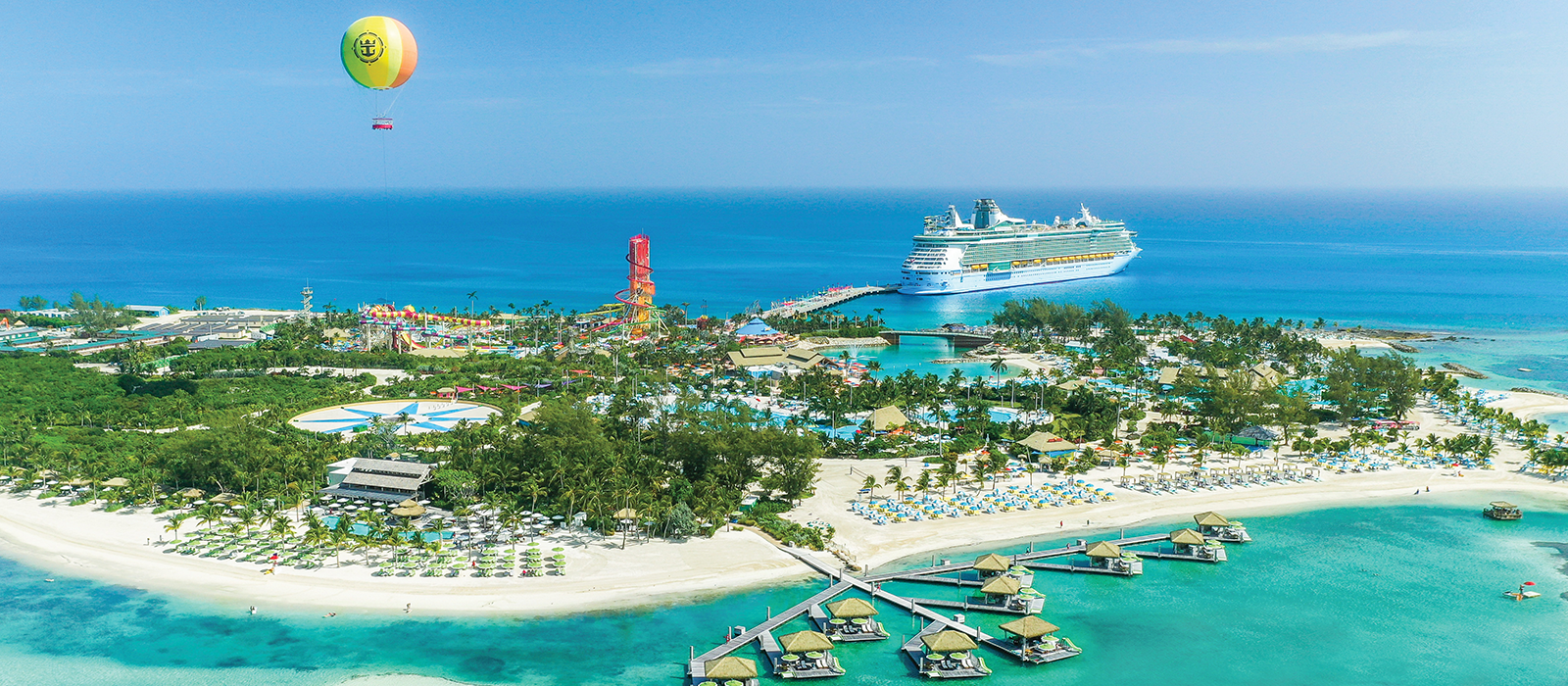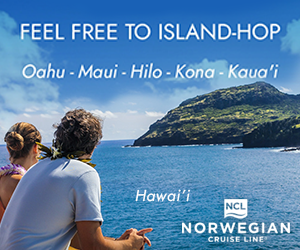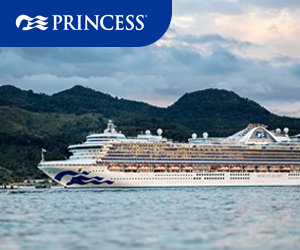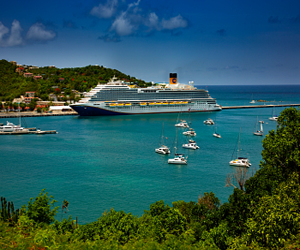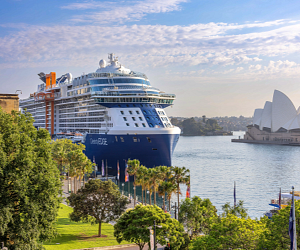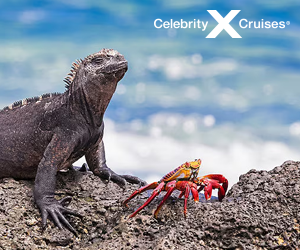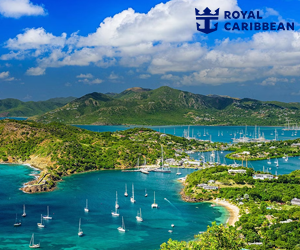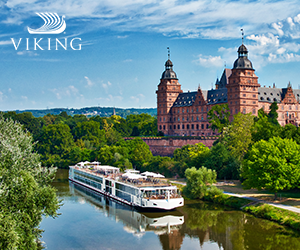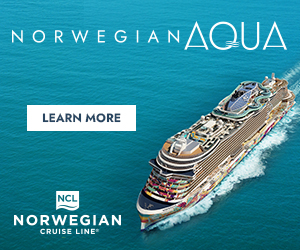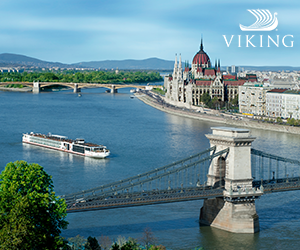Start Date:
End Date:
Destinations:
All
Africa
Alaska
Amazon River (South America)
Antarctica
Arabian Gulf
Arctic
Asia River
Asia and Asia Pacific
Australasia
Australia
Australia/New Zealand
Bahamas
Baja Mexico
Baltic Sea (Europe)
Bermuda
British Isles
Canada
Canada / New England
Canary Islands
Caribbean
Caribbean Eastern
Caribbean Southern
Caribbean Western
Central America
Central Mediterranean
Danube (Europe)
Dordogne (Europe)
Douro (Europe)
Dutchand Belgian Waterways (Europe)
Eastern Europe
Eastern Mediterranean
Elbe (Europe)
Europe
Europe River
Galapagos
Ganges (India)
Garonne (Europe)
Gironde (Europe)
Greenland
Hawaii
Hooghly River (India)
Iceland
India
Indian Ocean
Japan
Magdalena River
Main (Europe)
Mediterranean
Mekong (Asia)
Mexican Riviera
Mexico
Middle East
Mississippi River (USA)
Moselle (Europe)
New Caledonia
New Zealand
Nile (Africa)
North America
Northern Europe
Norway
Oceania
Pacific
Pacific Coastal
Panama Canal
Po (Europe)
Red Sea
Repositioning
Rhine (Europe)
Rhone (Europe)
Saone (Europe)
Seine (Europe)
South America
South Pacific
Southeast Asia
Southern Europe
Tasmania
The Great Lakes
Transatlantic
Transpacific
USA River
Vanuatu
Western Europe
Western Mediterranean
World Cruise
Departure Port :
All
Abu Dhabi - United Arab Emirates
Accra - Ghana
Adelaide - Australia
Alexandria - Egypt
Alicante - Spain
Alton - Illinois, United States
Amsterdam - Netherlands
Anchorage - Alaska, United States
Ancona - Italy
Antalya - Turkey
Antwerp - Belgium
Arles - France
Arrecifes - Spain
Athens - Greece
Athens (Lavrio / Lavrion / Laurium) - Greece
Athens (Piraeus) - Greece
Auckland - New Zealand
Avignon - France
Bali Denpasar (Benoa) - Indonesia
Baltimore - Maryland, United States
Baltra (Galapagos) - Ecuador
Bamberg - Germany
Bangkok - Thailand
Barbados (Bridgetown) - Barbados
Barcelona - Spain
Bari - Italy
Barranquilla - Colombia
Basel - Switzerland
Basseterre - Saint Kitts And Nevis
Bayonne - New Jersey, United States
Beijing - China
Belem - Brazil
Belfast - United Kingdom
Belgrade - Serbia
Benoa - Indonesia
Bergen - Norway
Berlin - Germany
Besancon - France
Biarritz - France
Bilbao - Spain
Bordeaux - France
Boston - Massachusetts, United States
Brindisi - Italy
Brisbane - Australia
Broome - Western Australia, Australia
Brussels - Belgium
Bucharest - Romania
Budapest - Hungary
Buenos Aires - Argentina
Busan - South Korea
Cagliari - Italy
Cairns - Australia
Cairo - Egypt
Calcutta - India
Callao - Peru
Cannes - France
Cape Town - South Africa
Cartagena - Colombia
Casablanca - Morocco
Catania - Italy
Chantilly - France
Chioggia - Italy
Churchill - Manitoba, Canada
Civitavecchia (Rome) - Italy
Cochem - Germany
Colmar - France
Cologne/bonn - Germany
Colon - Panama
Copacabana Beach - Brazil
Copenhagen - Denmark
Dakar - Senegal
Darwin - Australia
Decin - Czech Republic
Delhi - India
Dijon - France
Dijon - France
Doha - Qatar
Dubai - United Arab Emirates
Dublin - Ireland
Dubrovnik - Croatia
Duluth - Minnesota, United States
Durban - South Africa
Eberbach - Germany
Edinburgh - United Kingdom
Epernay - France
Fairbanks - Alaska, United States
Fort Amador - Panama
Fort de France - Martinique
Frankfurt - Germany
Ft Lauderdale (Port Everglades) - Florida, United States
Fukuoka - Japan
Funchal - Portugal
Fusina - Italy
Galveston - Texas, United States
Geneva - Switzerland
Genoa - Italy
Giurgiu - Romania
Glasgow - United Kingdom
Gran Canaria - Spain
Greenock - United Kingdom
Greenwich - United Kingdom
Guayaquil - Ecuador
Haifa - Israel
Halifax - Nova Scotia, Canada
Hamburg - Germany
Hannover - Germany
Hanoi - Vietnam
Helsinki - Finland
Heraklion - Greece
Ho Chi Minh City - Vietnam
Hobart - Australia
Honfleur - France
Hong Kong - Hong Kong
Honolulu - Hawaii, United States
Ibiza - Spain
Ijmuiden (Amsterdam) - Netherlands
Incheon - South Korea
Iqaluit - Nunavut, Canada
Istanbul - Turkey
Itajai - Santa Catarina, Brazil
Izmir Cumaovasi - Turkey
Jacksonville - Florida, United States
Jeddah - Saudi Arabia
Jerez Frontera - Spain
Johannesburg - South Africa
Juneau - Alaska, United States
Kampong Cham - Cambodia
Kangerlussuaq - Greenland
Keelung - Taiwan
Kicker Rock - Ecuador
Kiel - Germany
King George Island - Antartica
Kirkenes - Norway
Kobe - Japan
Kusadasi - Turkey
Kyoto - Japan
La Goulette - Tunisia
La Romana - Dominican Republic
La Spezia - Italy
Laem Chabang (Port of Laem Chabang) - Thailand
Lake Como - Italy
Las Palmas - Spain
Lautoka - Fiji
Le Havre - France
Leith - United Kingdom
Lima - Peru
Limerick - Ireland
Lisbon - Portugal
Liverpool - United Kingdom
Livorno - Italy
London - United Kingdom
London - United Kingdom
London (Dover) - United Kingdom
Long Beach - California, United States
Longyearbyen - Norway
Los Angeles - California, United States
Luxembourg - Luxembourg
Luxor - Egypt
Lyon - France
Maceio - Brazil
Madrid - Spain
Mahe Island - Seychelles
Malaga - Spain
Malta - Malta
Manchester - United Kingdom
Manila - Philippines
Mantua - Italy
Marghera - Italy
Marseille - France
Martigues - France
Medellin - Colombia
Melbourne - Australia
Memphis - Tennessee, United States
Messina - Italy
Miami - Florida, United States
Milan - Italy
Milazzo - Italy
Milwaukee - Wisconsin, United States
Minneapolis St Paul - Minnesota, United States
Mobile - Alabama, United States
Mombasa - Kenya
Monte Carlo - Monaco
Montevideo - Uruguay
Montreal - Quebec, Canada
Mumbai - India
Munich - Germany
My Tho - Vietnam
Naha - Japan
Nantes - France
Naples - Italy
Nashville - Tennessee, United States
New Orleans - Louisiana, United States
New York City - New York, United States
Newark (Cape Liberty, Bayonne) - New Jersey, United States
Nice - France
Norfolk - Virginia, United States
Nuremberg - Germany
Nuuk - Greenland
Okinawa - Japan
Olbia - Italy
oltenita - Romania
Osaka - Japan
Oslo - Norway
Otopeni - Romania
P. Baquerizo (san Cristobal) - Ecuador
Palermo - Italy
Palma De Mallorca - Spain
Panama City - Panama
Papeete - French Polynesia
Paranagua - Parana, Brazil
Paris - France
Passau - Germany
Perth (Fremantle) - Western Australia, Australia
Philadelphia - Pennsylvania, United States
Phnom Penh - Cambodia
Pointe a Pitre - Guadeloupe
Pont L Eveque - France
Port Canaveral (Orlando) - Florida, United States
Port Louis - Mauritius
Porto - Portugal
Portsmouth - United Kingdom
Prague - Czech Republic
Puerto Williams - Chile
Punta Arenas - Chile
Puntarenas - Costa Rica
Quebec - Quebec, Canada
Quito - Ecuador
Ravenna - Italy
Recife - Brazil
Regensburg - Germany
Reims - France
Remich - Luxembourg
Reykjavik - Iceland
Reykjavik - Iceland
Rio De Janeiro - Brazil
Rotterdam - Netherlands
Saarbruecken - Germany
Saint Jean de Losne - France
Salvador - Brazil
San Antonio (San Antonio, Chile) - Chile
San Diego - California, United States
San Francisco - California, United States
San Juan - Puerto Rico
San Sebastian - Spain
Santa Cruz de Tenerife - Spain
Santiago - Chile
Santo Domingo - Dominican Republic
Santos - Sao Paulo, Brazil
Sasebo - Japan
Savona - Italy
Seattle - Washington, United States
Sens - France
Sete - France
Seville - Spain
Seward - Alaska, United States
Shanghai - China
Shanghai (Baoshan) - China
Siem Reap - Cambodia
Sinaia - Romania
Singapore - Singapore
Skagway - Alaska, United States
Southampton - United Kingdom
Spandau - Germany
Split - Croatia
St Maarten (Philipsburg) - Netherlands
Stockholm - Sweden
Stockholm-Arlanda - Sweden
Stralsund - Germany
Strasbourg - France
Sydney - Australia
Tampa - Florida, United States
Tampa Bay - Florida, United States
Tanjung Pinang - Indonesia
Taranto - Italy
Tarragona - Spain
Tema - Ghana
Tenerife - Spain
Thessaloniki - Greece
Thunder Bay - Ontario, Canada
Tianjin (Beijing) - China
Tilbury - United Kingdom
Tokaj - Hungary
Tokyo - Japan
Toronto - Ontario, Canada
Toulon - France
Trieste (Venice) - Italy
Tromso - Norway
Trondheim - Norway
Ushuaia - Argentina
Valencia - Spain
Valletta - Malta
Valparaiso - Chile
Vancouver (Vancouver, BC) - British Columbia, Canada
Vannes - France
Vega de Terron - Spain
Venezia San Basilio - Italy
Venice - Italy
Victoria - Seychelles
Viengxay - Leo Peoples Dem. republic
Vienna - Austria
Vigo - Spain
Vilshofen - Germany
Walvis Bay - Namibia
Warnemuende - Germany
Washington - District Of Columbia, United States
West Palm Beach - Florida, United States
Whittier - Alaska, United States
Yokohama - Japan
Zeebrugge - Belgium
Zurich - Switzerland
Duration:
All
1 to 3 nights
4 to 6 nights
7 to 9 nights
10 to 13 nights
14 and more nights
30 and more nights
100 and more nights
Search
